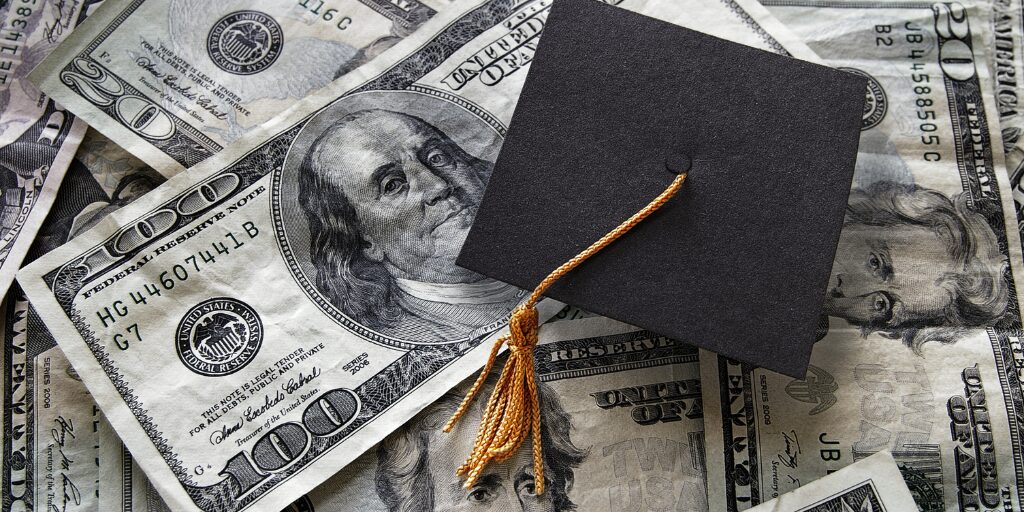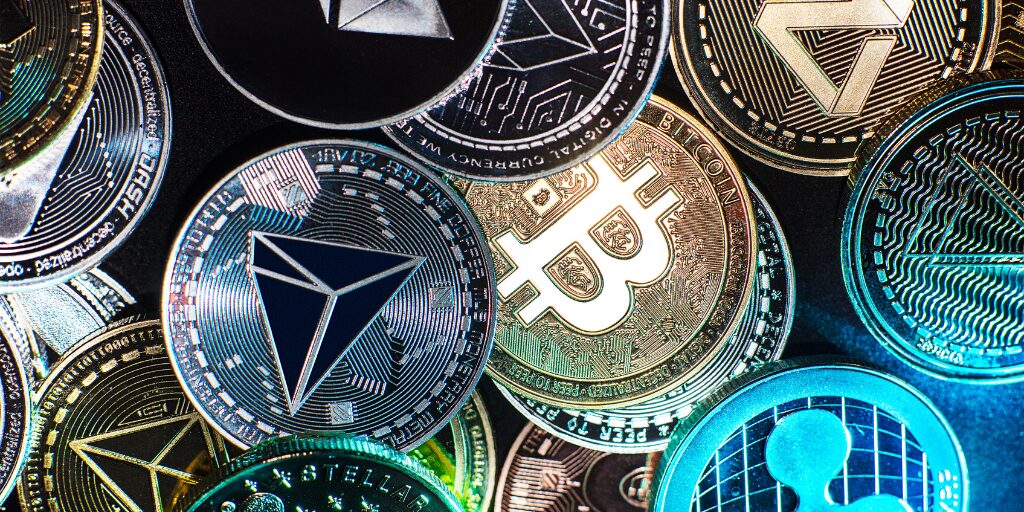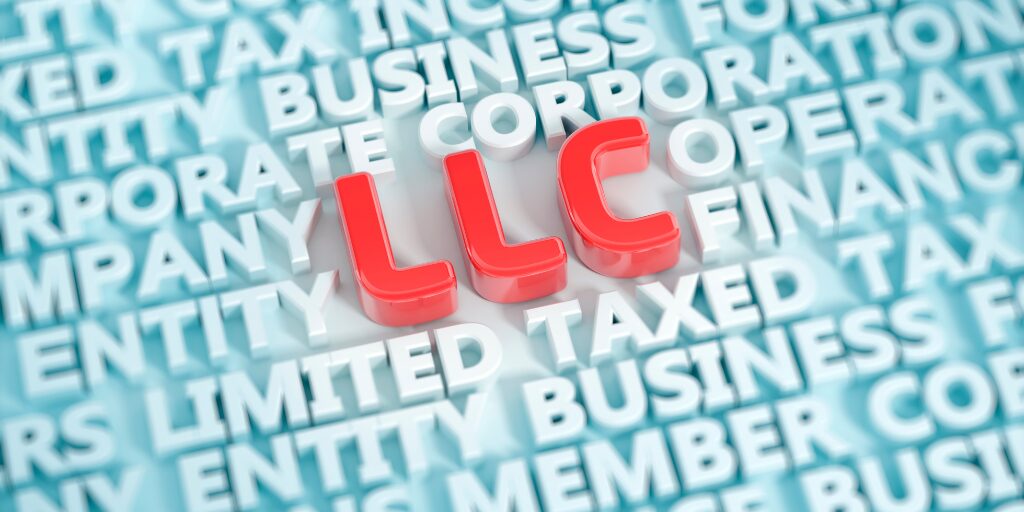The Trump Administration is set to restart collections for student loan borrowers who are currently in default. This decision, announced April 21st, comes after a long pause in collections due to the pandemic. Millions of Americans will now face the pressure of resuming payments, and it’s important to understand what this means for those affected.
Key Takeaways
- Collections on student loans in default will restart on May 5, 2025.
- Borrowers will receive notifications urging them to make payments or enroll in repayment plans.
- Consequences for ignoring these notices include wage garnishment and tax refund offsets.
- Advocacy groups criticize the timing, citing economic challenges for many borrowers.
- Resources and repayment options will be provided to help borrowers manage their loans.
Overview Of The Resumption Of Collections
What The Announcement Means For Borrowers
After a long pause that started back in March 2020, the Department of Education is gearing up to restart collections on defaulted student loans. What does this actually mean for you? Well, if you’re one of the millions of borrowers in default, it means the grace period is over. Payments are about to start again. This could involve wage garnishment, taking money from your tax refunds, or even offsetting Social Security benefits. It’s a big shift, especially if you’ve gotten used to not having to make those payments. The student loan debt situation is about to change, and it’s important to be prepared.
Timeline For Resuming Collections
Mark your calendars, folks. The official date to watch out for is May 5, 2025. That’s when the collections are scheduled to kick off. The Education Department will start sending out notices before then, but May 5th is the day things get real. Administrative wage garnishment is expected to resume later in the summer. So, you’ve got a little bit of time to get your ducks in a row, but not a ton. It’s time to figure out your repayment options and make a plan.
Impact On Borrowers In Default
The impact of resuming collections is going to be significant, especially for the 5.3 million borrowers currently in default. For many, it will mean a hit to their monthly income as wages are garnished. It could also affect their ability to get credit or secure loans in the future. The stress of dealing with debt collectors and the fear of financial instability can also take a toll. It’s not just about the money; it’s about the overall well-being of these borrowers. The government’s collection notices will be arriving soon, so be prepared.
Details Of The Collection Process
Types Of Collections Being Implemented
Okay, so the government is getting ready to start collecting on those defaulted student loans again. What exactly does that mean? Well, it’s not just one thing. They’re going to use a bunch of different methods to get the money back. Wage garnishment is a big one, where they take a chunk of your paycheck before you even see it. They can also offset your tax refunds, which nobody wants. Plus, they might withhold Social Security benefits. It’s a multi-pronged approach, designed to hit borrowers from several angles.
How Borrowers Will Be Notified
So, how will you know if you’re about to get hit with collections? The Education Department is supposed to send out notices before they start taking action. I think it’s a letter in the mail, but I wouldn’t be surprised if they also try email. The important thing is to actually read these notices. They’ll tell you exactly what’s going to happen, how much they plan to take, and what your rights are. Don’t just toss them in the trash! If you’ve moved recently, make sure your address is up to date with your loan servicer.
Consequences Of Ignoring Notices
Ignoring these notices is a really bad idea. If you do, the government will just keep moving forward with collections. Your wages will be garnished, your tax refunds will be taken, and your credit score will take a major hit. A defaulted student loan can stay on your credit report for seven years, making it hard to get a car loan, a mortgage, or even rent an apartment. Plus, the amount you owe will likely increase due to interest and collection fees. It’s way better to deal with the situation head-on, even if it’s scary. There are options available, like repayment plans, but you need to take action.
Economic Context Of The Decision
Current Economic Challenges For Borrowers
Right now, lots of people are dealing with a tough economy. Inflation is still making things expensive, and wages haven’t really kept up for many. This makes it harder to manage existing debt, including student loans. People are having to make some hard choices about what bills to pay. It’s a stressful situation, and adding student loan payments back into the mix just makes it worse.
Impact Of The Pandemic On Student Loans
The pandemic really messed things up for a lot of folks. The payment pause on federal student loans was a big help, but now that it’s ending, people are worried. Many borrowers are in worse shape financially than they were before the pandemic. Some lost their jobs, had their hours cut, or had to take on extra expenses. The Student Borrower Protection Center has more information on this.
Rising Costs Of Living And Student Debt
It’s not just student loans; everything costs more these days. Rent, groceries, gas – it all adds up. When you’re already struggling to make ends meet, adding another big bill like a student loan payment can feel impossible. This situation is especially hard for recent graduates who are just starting their careers and haven’t had time to build up savings. The rising cost of living combined with student debt creates a real financial squeeze for many Americans.
Here’s a quick look at how some costs have changed:
| Expense | 2015 | 2025 (Projected) |
|---|---|---|
| Rent (Avg) | $900 | $1400 |
| Groceries | $300 | $450 |
| Gas (Per Gal) | $2.50 | $4.00 |
Government’s Justification For Resuming Collections
Statements From Education Officials
Education officials have stated that resuming student loan collections is a necessary step toward restoring fiscal responsibility. They argue that the pause, while helpful during the height of the pandemic, cannot continue indefinitely without impacting the federal budget. Officials point to the need to balance support for borrowers with the government’s obligation to manage taxpayer money effectively. They also emphasize that resources are being directed toward helping borrowers transition back into repayment, including expanded access to income-driven repayment plans.
Rationale Behind The Decision
The core rationale centers on the idea that the economy has improved significantly since the initial pause on student loan collections. The administration believes that many borrowers are now in a better position to resume payments. Continuing the pause would create a disincentive for repayment and could lead to long-term financial instability for the student loan program. The government also argues that the funds collected from student loan payments are crucial for supporting other educational programs and initiatives. Here are some key points:
- Economic recovery is underway.
- Long-term sustainability of the student loan program.
- Funds needed for other educational programs.
Expected Outcomes For The Federal Budget
The resumption of collections is projected to have a positive impact on the federal budget. While the exact figures vary depending on economic conditions and borrower behavior, the government anticipates a significant increase in revenue as borrowers resume making payments. This revenue can then be used to offset other government spending or reduce the national debt. However, some economists caution that the impact may be less than anticipated if a significant number of borrowers struggle to repay their loans, potentially leading to increased defaults.
Criticism From Advocacy Groups
Reactions From Student Loan Advocates
Student loan advocacy groups haven’t held back in their criticism of the resumption of collections. Many argue that restarting collections now is simply the wrong move, given the current economic climate. They believe it will disproportionately harm low-income borrowers and those already struggling to make ends meet.
Concerns About Economic Impact
The biggest worry is the potential economic fallout. Advocates point out that resuming collections could trigger a wave of defaults, further destabilizing borrowers’ financial situations. This could lead to decreased spending, increased debt, and a drag on the overall economy. It’s a domino effect they’re keen to avoid. Some are saying that the timing couldn’t be worse, with inflation still a concern and many families just barely getting by.
Calls For Policy Changes
Advocacy groups aren’t just complaining; they’re actively pushing for policy changes. Their demands include:
- Extending the pause on student loan payments and collections.
- Implementing broader student loan forgiveness programs.
- Reforming the income-driven repayment plans to be more accessible and affordable.
- Increasing oversight of student loan servicers to prevent predatory practices.
They see these changes as essential to providing real relief to borrowers and preventing future crises. It’s a multi-pronged approach aimed at fixing what they see as a broken system.
Options Available For Borrowers
Repayment Plans To Consider
Okay, so you’re facing the resumption of student loan collections? Don’t panic! There are actually several repayment plans you should look into. It’s not a one-size-fits-all situation, and finding the right plan can make a huge difference in your monthly payments and overall financial health.
- Standard Repayment Plan: This is your basic, no-frills option. You’ll pay a fixed amount each month for up to 10 years. It’s straightforward, but the monthly payments can be higher than other plans.
- Graduated Repayment Plan: Payments start low and increase every two years. This might be good if you expect your income to rise over time. However, you’ll end up paying more interest in the long run.
- Income-Driven Repayment (IDR) Plans: These plans are where it gets interesting. IDR plans base your monthly payment on your income and family size. If your income is low, your payments could be significantly lower than under the standard plan. There are several types of IDR plans, including Income-Based Repayment (IBR), Pay As You Earn (PAYE), and Revised Pay As You Earn (REPAYE). Each has its own eligibility requirements and terms, so do your homework. The Student Borrower Protection Center can help you understand these options.
How To Avoid Default
Defaulting on your student loans can have serious consequences, like wage garnishment and a damaged credit score. Here’s how to steer clear:
- Stay in Communication: Don’t ignore calls or emails from your loan servicer. They’re there to help you, not just collect money. If you’re struggling, reach out to them before you miss a payment.
- Consider Deferment or Forbearance: If you’re temporarily unable to make payments due to financial hardship, unemployment, or other reasons, you might be eligible for deferment or forbearance. These options let you temporarily postpone or reduce your payments, but interest may still accrue.
- Explore Loan Consolidation: Consolidating your federal student loans can simplify repayment by combining multiple loans into one with a single monthly payment. It can also make you eligible for certain repayment plans and forgiveness programs.
- Make Partial Payments: Even if you can’t afford the full payment, making partial payments can show good faith and potentially prevent your loan from going into default. Every little bit helps!
Resources For Financial Assistance
Finding help with student loans can feel overwhelming, but there are resources available. Don’t be afraid to ask for assistance!
- Your Loan Servicer: Your loan servicer is your first point of contact. They can provide information about your loan balance, interest rate, repayment options, and eligibility for deferment or forbearance.
- The Department of Education: The Department of Education’s website has a wealth of information about federal student loans, including repayment plans, loan forgiveness programs, and resources for borrowers in default.
- Nonprofit Credit Counseling Agencies: These agencies offer free or low-cost financial counseling and debt management services. They can help you create a budget, explore your repayment options, and develop a plan to get back on track. Just make sure they are legit and not trying to scam you.
- Student Loan Advocacy Groups: Organizations like the Student Borrower Protection Center advocate for borrowers’ rights and provide resources and support to help them navigate the student loan system. They can be a great source of information and advocacy.
Long-Term Implications For Student Loan Policy
Potential Changes In Legislation
The resumption of student loan collections could very well spur new legislative efforts. Lawmakers might introduce bills aimed at reforming the student loan system, addressing issues like interest rates, repayment plan options, and eligibility for loan forgiveness. It’s not just about immediate relief; it’s about setting up a more sustainable system for future borrowers. We could see proposals for income-driven repayment plans that are easier to navigate or even efforts to simplify the Free Application for Federal Student Aid (FAFSA) process. The goal? To prevent future waves of defaults and make higher education more accessible. Keep an eye on how debt legislation evolves in response to the current situation.
Future Of Student Loan Forgiveness
The debate around student loan forgiveness is far from over. With collections resuming, expect renewed calls for broader forgiveness programs. The administration’s stance on forgiveness will be a key factor. Will they consider targeted relief for specific groups of borrowers, or will they stick to their current approach? The outcome could reshape the landscape of higher education financing and influence how future generations approach student debt. The back-and-forth between the Education Department and advocacy groups will likely intensify, shaping the narrative around who deserves relief and why.
Impact On Higher Education Funding
The way we fund higher education could see some big shifts. If defaults continue to rise despite collection efforts, there might be pressure to re-evaluate how colleges and universities are funded. Could we see more emphasis on outcomes-based funding, where institutions are rewarded for student success in terms of graduation rates and job placement? Or perhaps a push for greater transparency in tuition costs and fees? The conversation could also extend to the role of for-profit colleges and their impact on student debt levels. Ultimately, the goal is to ensure that higher education remains a worthwhile investment for students, without saddling them with unmanageable debt.
Communication Strategies By The Administration
Planned Outreach To Borrowers
So, how’s the government planning to get the word out about the resumption of student loan collections? Well, it sounds like they’re aiming for a multi-pronged approach. The Department of Education is supposed to be sending out official notices – think letters and emails – to everyone affected. They’re also working with loan servicers to make sure those folks have the right info and can answer questions. It’s a big job, considering how many people are involved, but hopefully, they’ll manage to reach most borrowers before the collections actually start. It’s important that borrowers understand the repayment plans available to them.
Use Of Social Media For Notifications
Yep, you read that right. The administration is apparently planning to use social media to spread the word. I guess they figure that’s where a lot of people get their news these days. I’m not sure how effective it will be, but it’s worth a shot, right? They’ll probably be posting updates and reminders on platforms like Twitter and Facebook. Keep an eye out for official accounts and hashtags related to student loans. It’s a pretty modern way to communicate, but hopefully, it’ll help reach some of the younger borrowers who might not be checking their mail as often.
Educational Campaigns On Repayment
Beyond just sending out notices, the administration is also talking about launching educational campaigns to help borrowers understand their repayment options. This could include things like webinars, online resources, and maybe even some public service announcements. The goal is to make sure people know about income-driven repayment plans, deferment, and other ways to avoid default. It’s a good idea in theory, but the devil’s always in the details. Will the information be clear and easy to understand? Will people actually pay attention? Only time will tell. Here’s a quick rundown of what they’re planning:
- Informational webinars explaining repayment options
- Easy-to-understand guides on avoiding default
- Partnerships with financial literacy organizations
Historical Context Of Student Loan Collections
Previous Pauses In Collections
Student loan collections haven’t always been a constant. There have been several pauses, often tied to economic downturns or national emergencies. For example, the most recent pause, lasting about five years, was initiated in March 2020 in response to the COVID-19 pandemic. These pauses provided temporary relief, but also created complexities in the long-term management of student debt. Understanding these previous pauses helps contextualize the current resumption.
Trends In Student Loan Defaults
Looking back, student loan default rates have shown some interesting trends. Before the pandemic, default rates were already a concern, particularly among borrowers with certain types of loans or those who attended for-profit institutions. The extended pause in collections likely masked the true extent of the problem, and now, as collections resume, we might see a spike in defaults. Here’s a simplified look at pre-pandemic trends:
- 2015: 11.3%
- 2016: 10.8%
- 2017: 10.1%
Lessons From Past Collection Practices
Past collection practices offer valuable lessons. Aggressive tactics, like wage garnishment, can push borrowers further into financial hardship. On the other hand, more supportive approaches, such as income-driven repayment plans, have shown promise in helping borrowers manage their debt. The effectiveness of collection strategies hinges on balancing the government’s need to recover funds with the borrower’s ability to repay. Moving forward, it’s important to consider what worked and what didn’t in the past to create a more sustainable system.
Final Thoughts on Student Loan Collections
As the Trump Administration prepares to restart collections on defaulted student loans, many borrowers are understandably anxious. Starting May 5, those who haven’t made payments will face serious consequences, including wage garnishment and tax refund offsets. This move comes at a tough time for many Americans who are already struggling with rising costs and economic uncertainty. If you’re among those affected, it’s crucial to explore your options. Whether it’s making a payment or signing up for a repayment plan, taking action now can help you avoid the harsh penalties that are on the way. Stay informed and don’t hesitate to seek assistance if you need it.
Frequently Asked Questions
When will the collections on student loans resume?
Collections on student loans will start again on May 5, 2025.
What happens if I don’t make a payment by the deadline?
If you don’t make a payment or sign up for a repayment plan by May 5, you will be sent to collections.
How will I know if I am in default?
You will be notified by email if you are in default on your student loans.
What types of collections can the government use?
The government can take money from your wages, tax refunds, and Social Security benefits.
What if I can’t afford my payments?
You can apply for a repayment plan that fits your budget to avoid default.
Why is the government resuming collections now?
The government believes it is necessary to help borrowers start repaying their loans and to manage federal funds.
What should I do if I’m struggling with my student loans?
You should reach out to your loan servicer for options or check government resources for help.
What are the long-term effects of these collections?
These collections may lead to changes in student loan policies and could affect future borrowers.




